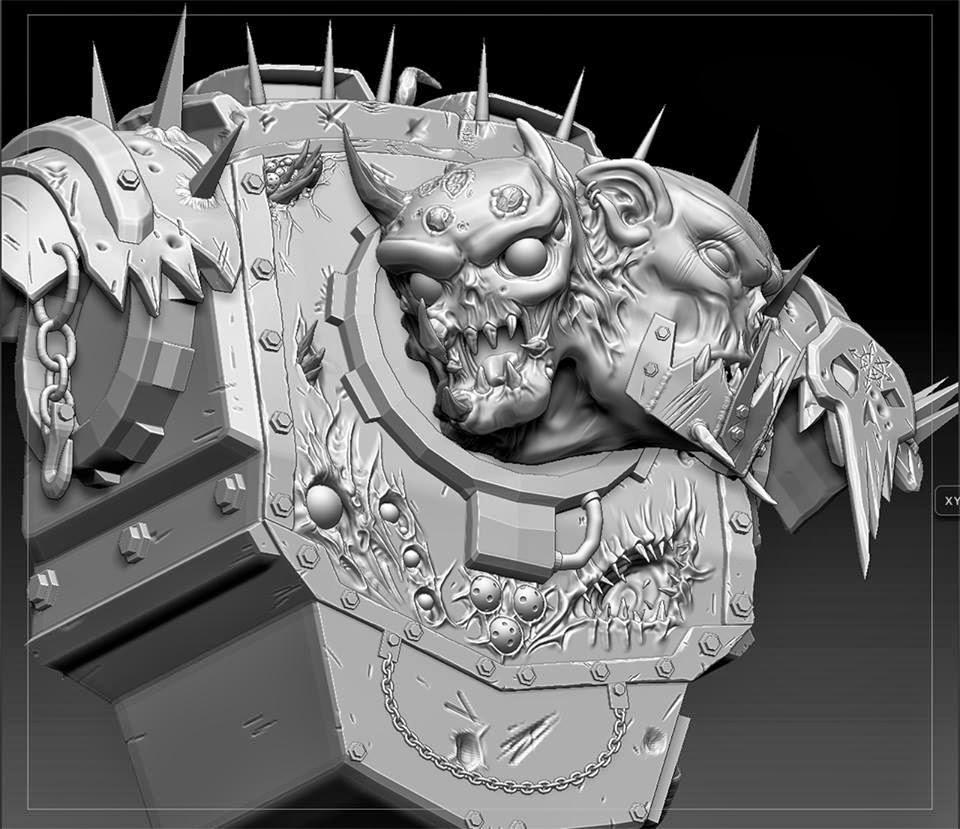After a solid 2 days of fixing, in most cases vert by vert by hand, my model has finally been cleared for printing!
It is currently 'In Production' and has an estimated shipping date of Feb 6th, its shipping from America so I'm going to have to allow for some extra transit time. Hopefully it won't take too long to get here once sent of as its traveling by UPS and they are generally pretty good.
It is currently 'In Production' and has an estimated shipping date of Feb 6th, its shipping from America so I'm going to have to allow for some extra transit time. Hopefully it won't take too long to get here once sent of as its traveling by UPS and they are generally pretty good.
So the final hand-in date and presentations are on Tuesday 6th May. Which leaves me with just under 14 weeks from now. Given the time it takes to get models printed and sent back to me I need to use my time as efficiently as possible so I'm not just sitting around waiting for models to turn up!
So here it is - MY FMP TIME PLAN
The plan is subject to change depending on how long shipping takes, estimated printing times for each individual model etc but I will try stick to this as much as possible.
I have already spent a little time doing some concepts but stopped to get the test model done. I have given myself 2 weeks, the time it will take for the test model to get here, to do all the concepts I will need to get my other models done. (I don't want to start modelling yet as my approach may change depending on quality etc of the test print).
Modelling 1st Figure: 1.5 weeksThe WarBoss, he is going to be my biggest model, the 'HQ' unit as Games Workshop calls them. He is going to be approx 3"-4" and can therefore have more detail than the others. He will be built in a mixture of zbrush and 3DsMax.
Fixing time: 0.5 weeksHopefully if I build my model according to my guidelines (see previous post) I won't need this long to fix the model, but given its going to be fairly complex I wanted to make sure I had allocated time for making changes and alternations that need to happen.
Modelling 2nd Figure:1.5 weeksThe 'Tracker', an elite unit approximately 2" big. I will begin modeling the second figure as soon as the first has been cleared for printing and moved in production. I don't have enough time to wait for the 1st model to turn up before beginning the 2nd.
Fixing time: 0.5 weeksAs with the first model I'm hoping I won't need this long but I wanted to ensure the time was there in case it is needed.
Modelling 3rd Figure: 1.5 weeksI am undecided on what this model will be, either a vehicle unit or infantry. By the time I am modelling the 3rd figure the 1st should have arrived which may influence which unit I decide to make. Depending on which unit I choose I am expecting the size to be somewhere between 2"-4".
Fixing time: 0.5Depending on which unit I do I am expecting to have more problems with this model and am likely to need this time fixing it for print.
The date at this point would be the 26th March. If completed to plan I would have all concepts done and 3 models completed and sent for print, 2 of which should have arrived back.
I would have approximately 6 weeks left.
Painting Models: 3 weeks
Fortunately I have a "How to paint citadel miniatures" book by Games Workshop to help me along the way. It can be found HERE!
A page from inside the book detailing how to do some effects.
Extra time: 3 weeksIf it all goes to plan I will have an extra 3 weeks once all the models have been completed.
These 3 weeks will act as a buffer in-case any part of the project takes longer than expected, such as delays in shipping etc.
If I have enough time within these 3 weeks I am hoping to make a base for each model to sit on, which will help finalize them and give them a professional look. I originally thought about getting these 3d printed but have decided I won't have enough time for these to get printed and arrive. I am therefore planning on modeling the bases by hand using 'green stuff' which is a resin similar to those used for printing but can be sculpted by hand at home.
Here is an example of a 'home-made' bases that someone else has done.
I also plan to use this time to work out presentation of my models including professional photographs of the models and displaying the progress work involved. I'm thinking about doing a 'development' presentation for each model including; concepts, sculpts, printed models, painted models and the final 'showcase' images. These could be printed onto large sheets and mounted to sit behind my finished models.




























































